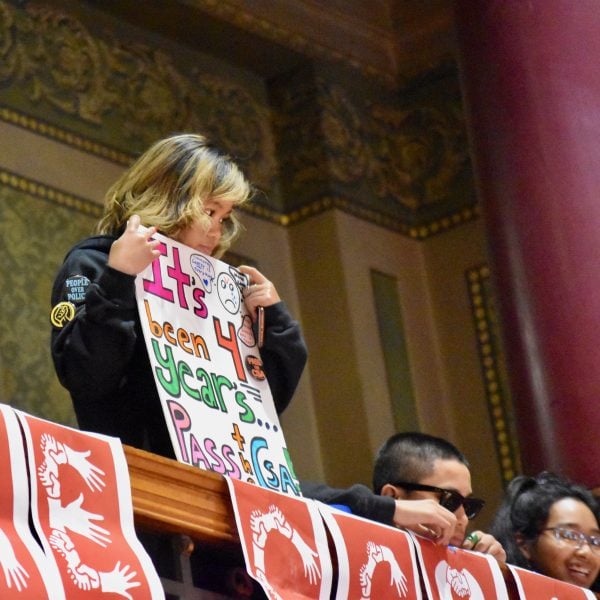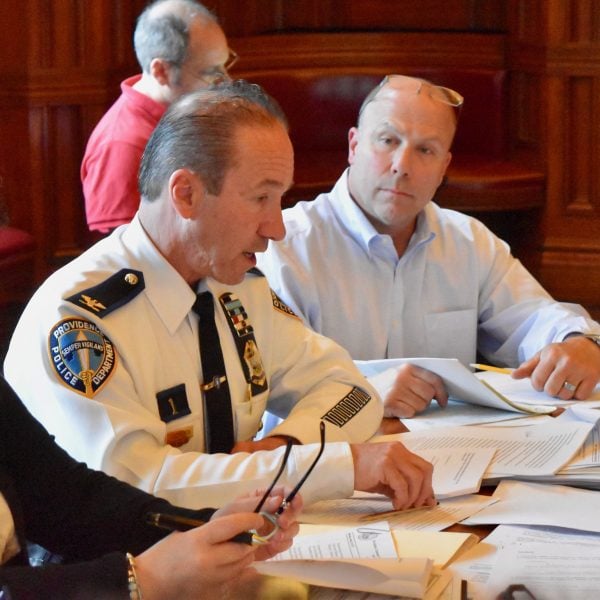New Providence Police gang database policy violates Community Safety Act, maintains PrYSM
The newly created Intelligence Assessment Database “blatantly and unequivocally” violates the Community Safety Act (CSA) maintains attorney Shannah Kurland in a letter to Providence Mayor Jorge Elorza and City Solicitor Jeffrey Dana. Kurland is the legal director of the Providence Youth Student Movement (PrYSM)’s Community Defense Project. The Community Safety Act is the “colloquial” name for the Providence Community-Police Relations Act,
January 4, 2018, 3:11 pm
By Steve Ahlquist
The newly created Intelligence Assessment Database “blatantly and unequivocally” violates the Community Safety Act (CSA) maintains attorney Shannah Kurland in a letter to Providence Mayor Jorge Elorza and City Solicitor Jeffrey Dana. Kurland is the legal director of the Providence Youth Student Movement (PrYSM)’s Community Defense Project. The Community Safety Act is the “colloquial” name for the Providence Community-Police Relations Act, passed last year despite strong opposition from the Providence Police union.
The CSA expressly forbids the use of association “with other people identified as gang members or any substantially equivalent factor” from the list of criteria used to determine inclusion on the so-called gang database, notes Kurland, yet a newly created policy “violates the CSA in at least six and as many as nine of the 14 ‘weighted criteria that shall be used to establish an individual’s designation as a gang member within the database,'” writes Kurland:
The most egregious of these illegal criteria, II.B.13. suggests that the drafters of the policy chose to completely ignore established law:
“Documented as having had three (3) or more contacts with known gang members and/or involvements (sic) in any gang activity, to include information generated from Field Intelligence Reports.”
Several additional criteria could easily implicate the illegal consideration of association with other people identified as gang members, in that they rely on identification by individuals, whether informants (nos. 7, 8), law enforcement agencies (nos. 1, 2, 12, and 14) or simply as a consequence of First Amendment protected association or expression (no. 5 – appearance in photographs; no. 11 – contributor in publications).
Aside from broader Constitutional concerns, many of which our partner organizations and community members outlined during the discussions that led to the adoption of the CSA, City law is now crystal clear in forbidding the use of association to allege gang membership.
The gang database is used by the Providence Police Department (PPD) to track gang members and affiliations. It uses a point system to determine the probability of a particular person being in a gang. The new point system has “fourteen weighted criteria that shall be used to establish an individual’s designation as a gang member within the database.”
Here are the criteria:
- Prior gang member validation by a law enforcement agency (9 points).
- Named in gang-related information received from an unaffiliated law enforcement agency (2 points).
- Self-admission (10 points).
- Use and/or possession of gang group paraphernalia or identifiers (4 points).
- Appearance in gang group-related photographs (2 points).
- Bearing known gang group tattoo or marking (8 points).
- Named in gang-related information from reliable, confidential informants (6 points).
- Named in gang-related information from an anonymous informant or tipster (1 point).
- Possession of gang-related documents (4 points).
- Named in gang-related documents as a gang member (8 points).
- Contributor in gang publications (8 points).
- Named in court and investigative gang-related documents (9 points).
- Documented as having had three or more contacts with known gang members and/or involvements in any gang activity, to include information generated from Field Intelligence Reports (3 points).
- Information developed during investigation(s) involving gang activity (5 points).
During final negotiations on the CSA between community groups and city officials, a great amount of time was spent on the issue of the gang database, as can be seen here. Near the end of discussions, at the last working group session, Providence Police Chief Hugh Clements said, “I think it’s important, in public safety, in the city, to allow for association,” but he let the issue go. “Association” would no longer be a gang database criteria.
This piece may be updated if Mayor Elorza or Solicitor Dana respond to a request for comment.
See:
Previously:
Providence FOP elections sparks concerns over implementation of the CSA
Amid tensions between city and community, Mayor Elorza signs the CSA into law
Providence City Council passes the Community Safety Act
CSA Working Group releases final report and draft of renamed Community Safety Act
With all issues resolved, Community Safety Act now ready for final passage
Would the Community Safety Act by any other name smell as sweet?
Attorney Shannah Kurland resigns from CSA Working Group
Gang database criteria a contentious issue at third CSA Working Group meeting
Second meeting of CSA Working Group results in extremely minor changes
Catching up with the Community Safety Act: Where does it stand right now?
UpriseRI is entirely supported by donations and advertising. Every little bit helps:
![]()







